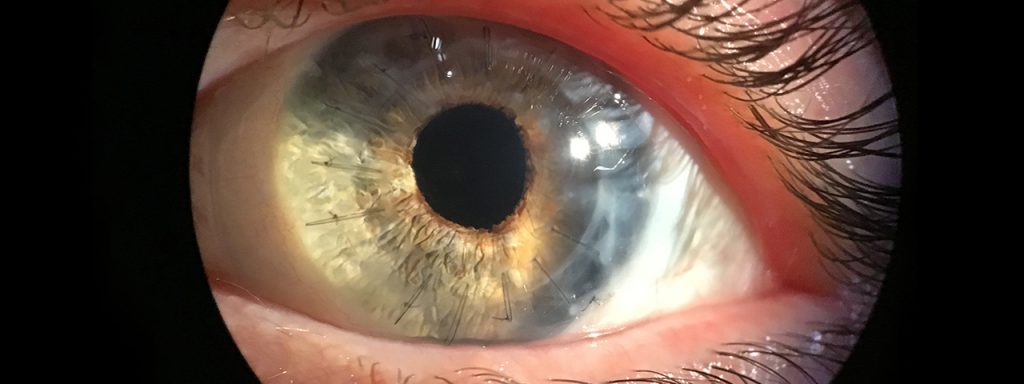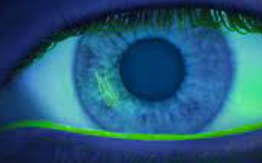The cornea provides more than 66% of the focusing power of the eye, but what exactly does that mean for your vision?
The cornea is the clear, dome-shaped, outermost layer of the eye. It is the main part of the eye responsible for focusing light onto the retina at the back of the eye, for the production of clear vision.
A healthy, dome-shaped cornea provides most of the focusing power of the eyes — therefore, any corneal irregularity, including a change in its shape or curvature can result in vision problems.
Why is the cornea’s shape important?
The cornea’s shape impacts the way light is focused onto the retina.
In a healthy visual system, light first enters the eye through the cornea, where it is focused for the first time. It then continues to travel through the lens, to the retina in the back of the eye, where the light signals are transferred to the brain and an image of the world around us is created.
The image is sent to the brain through the optic nerve for interpretation and processing. The brain then fuses the images from each eye into a single, colorful, 3D images that we can understand.
An irregular corneal shape or curve prevents the light from focusing directly on the retina, resulting in scattered light and blurry vision.
There are many types of vision problems that can result from an irregular cornea:
1. Myopia
Myopia (nearsightedness) occurs when the eye is too long or the cornea is too curved, causing light to be focused in front of the retina, instead of directly on it.
Myopia results in distant objects appearing blurry, such as road signs and television screens.
2. Hyperopia
Hyperopia (farsightedness) occurs when the eye is too short or the cornea is too flat, causing light to be focused behind the retina, instead of directly on it.
Hyperopia results in near objects appearing blurry or out of focus, such as words on a page, numbers on a phone or images on a computer screen.
SEE RELATED: Corneal Diseases
Schedule an appointment with an eye doctor if you are experiencing blurry vision — you may have a corneal condition.
3. Astigmatism
Astigmatism occurs when the curve of the cornea is not perfectly round like the surface of a ball, but instead, more oval, like a football.
Astigmatism causes light to be focused in two different points on the retina, and results in blurred and/or double vision at all distances.
4. Keratoconus
Keratoconus is a common corneal condition that occurs when the cornea begins to thin and bulge out, becoming more conical in shape.
This condition is most often caused by a weakening of the collagen fibers inside the cornea, which enable the cornea to maintain its shape. As these fibers weaken, the cornea begins to flex and bulge outward— resulting in an irregular astigmatism.
Keratoconus causes blurry vision at all distances, as well as distorted or double vision.
5. Other corneal conditions
There are many other corneal conditions that can significantly impact your ability to see clearly.
The most common corneal conditions include:
- Keratitis
- Corneal scratches and abrasions
- Corneal ulcers
- Fuchs Dystrophy
- Corneal infections, including herpes
If you have been diagnosed with any of these conditions, your eye doctor can discuss the most effective treatment options for you.
Can an irregular cornea be corrected?
Yes.
Myopia and hyperopia are most often treated with corrective lenses, either glasses or contact lenses. Laser refractive surgery is another effective option for adults.
A mild to moderate astigmatism can be corrected with glasses or contact lenses as well.
However, severe astigmatism and keratoconus generally require a special type of contact lens, called a scleral lens, to effectively correct blurry and double vision.
Scleral lenses are designed to vault over the cornea and sit on the sclera, or the white part of the eye. In this way, scleral lenses provide clear, sharp vision, while avoiding the irregular cornea completely.
Laser refractive surgery may be another option for adult patients, depending on the severity of the astigmatism.
There are many forms of corneal surgery that can restore lost sight or at least reduce the risk of further vision deterioration.
LEARN MORE: Guide to Corneal Diseases
Contact an eye doctor near you if you are experiencing blurry vision.
An irregular corneal shape can cause vision problems ranging from mild myopia to severe keratoconus and other sight-threatening corneal conditions.
If you have noticed any changes in your vision, it is important to inform your eye doctor, as blurry vision can be an early sign of a serious eye disease that requires prompt attention.










